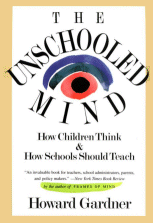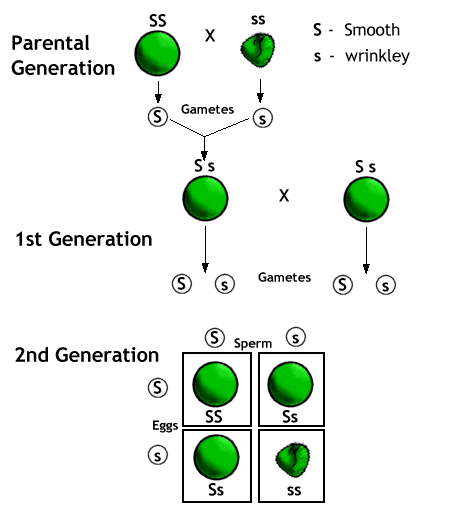Society asks a number of questions about intelligence and IQ that are hard for us to answer. Among these are the following six questions: Is Intelligence Malleable? What Should We Teach People If It Is Malleable? Is Intelligence Measurable? What Determines Intelligence? Why Do Some Groups Score Differently? What Should We Do About Group Differences |
1) Is Intelligence Malleable? In other words, can we increase intelligence, and through that IQ scores? If you say "Yes," and we try and fail, does that mean you were wrong our our efforts were wrong? Many have had a good bit to say about the successes and failures of our educational system, Gardner being one. He believes much of our educational system is skewed in an effort to teach test scores, "save time" and give children "what they need to know" rather than teaching them to think. | 
| | Gardner proposes five ways people learn, explained below, and under each I've listed relevant course activities: narrational - learning through a story or narrative case examples from Sattler and my practice on use of IQ progressive writing reflecting the narrative of your own learning notes and time-tracking feedback on your own performance testing a real person and seeing their life and scores
logical-quantitative - learning through reasoning processes learning the math of the scores and their computation class discussion on use of IQ testing evaluating a writeup
foundational points - learning through examination of philosophical reflection portfolio classes on intelligence and IQ, on culture and IQ, on misuse of IQ, and on ethics
aesthetic appreciation - learning through sensory experiences that capture attention progressive writing with personal and peer reflection writing and offering peer feedback clearly student teaching topics (sometimes completed with a peer) TA meetings to help with student teaching topics notes and time-tracking feedback surveys and note cards
experiential - learning through hands-on work scoring and write-up practice, revisions, and reviewing one's progress on these tasks discussing real case examples student teaching topics peer and TA feedback on writing testing two real people progressive writing assignment tracks changes in understanding over time
2) What Should We Teach People If It Is Malleable? If there are multiple types of intelligence, should we focus on helping each child excel in one like training a specific muscle group, or try teaching each child all of them in a "general workout" model?
Another point noted by Daniel (1997) is that many tests of some ability actually tap more than one ability because there is more than one way to perform the task. A good example is Digit Span Backwards from the WAIS. You read out a list of numbers, and the client recalls them in reverse order. Some argue it is an auditory task (since they hear the numbers and recall them verbally) while others offer, and support, for some it is a visual task (where they "write down" the numbers on a "blackboard in their head" and simply read them backwards to you).
3) Is Intelligence Measurable? Some say "Yes," but this begs the question, "How do we measure it, and how do know we are measuring it well?" Paper and pencil tests? Observation over time? Neurological scans? And if we find a way, would any method be superior, or would they all be about the same? Should we measure based on how we want to use the information?
Some respond "No," while some say, "No, not with the tests we have at this time." Some say that intelligence is really about the "fit execution of a task" which is situationally dependent. Thus, the measurement of it must vary across time and place.
Ceci cites some interesting studies he did with children. He and colleagues asked children to take cupcakes out of the oven or unplug a charging battery in 30 minutes. Meanwhile, they could play a video game. An experimenter counted the number of times children looked at the clock to see if the 30 minutes had passed. In the lab, both 10 and 14 year old boys and girls showed a gentle sloping then sharp upward curve. They checked the clock regularly for the first 25 minutes, then sharply increased the frequency of clock checking during the last five minutes. They did not appear to have an internal clock to mark the passage of time in the lab.
However, at home both groups showed a large U shaped curve. They checked the clock very frequently at first, then, as if they had an internal clock to keep track of time, checked it less frequently, until the last five minutes when they checked it very often. This was reproduced even when the experimenter made the clock run slower or faster than normal. You might say they showed a cognitive ability at home they did not show in the lab. | |
They did a similar study with tracking three figures (circle, square, triangle), in two colors (light and dark) or two sizes (small and large), as they moved across a computer screen. Children were asked to use a joy stick with a cross hair on-screen pointer to predict the final resting point for the object. Generally, squares went up, circles went down, and triangles stayed level, with dark colored objects moving right to left and light colored objects moving left to right, and larger objects starting at the bottom left of the screen and smaller objects starting at the upper right of the screen. Even after 750 trials, children only had 22% accuracy.
|  |
Next they changed the task, substituting butterflies, bumble bees, and birds for the shapes, and instead of placing a cross hair cursor on the final resting place, they were told to put a "net" where they thought the animal would rest so they could catch it. Points were given for correct guesses, with sound effects. After 750 trials, children had near perfect prediction. Familiarity with the test materials and positive feedback make a huge difference. |  | 4) What Determines Intelligence? There seem to be three main factors that influence intelligence: Genetics Biology and Biochemistry Environment Influence #1 - Genetics
Before we dive into this, several key terms. First is a heritability estimate (h2). This is the percentage that genetics are thought to contribute to a trait averaged over the whole population, while an environmental estimate (c2) is the percentage that common environmental factors are thought to contribute to a trait averaged across the population. The environmental estimate can be broken down into shared environment (twins raised in the same home) and non-shared environment (twins going to different schools). Note, that: these estimates are stated as a percentage of the variance, unlike correlations (so you do not square these estimates) neither of these numbers is applicable to individuals, only to the group of people upon which the estimate is based.
Typically, people think to compute a heritability estimate first, subtract this from 100%, and then assume the remaining number is all that goes into the environmental estimate. You can also compute h2 for two traits and determine the amount that genes contribute to both traits. The h2 estimate for reading and math learning difficulties, for example, is .50.
With intelligence, h2 goes up with age while c2 goes down, and it almost reaches zero by adolescence. Consider that the best indicator of recovery from neurological trauma is premorbid functioning. Put another way, intelligence now is the best predictor of how you will recover from brain trauma. As you grow older, early formative experiences like schooling, home life, and traumas make less of a difference, and the abilities you were born with count for more. This also means that trying to separate the amount that environment versus genes contributes to a trait means working with children, as working with adolescence is unlikely to detect any contribution of environment.
There are three problems with this. First, it doesn't allow for any overlap. For example, rabbits with some genes can be bred to be mostly black or mostly white by the temperature in their cages. Black fur absorbs light and heat, white fur reflects it, so a cold cage leads to more black fur rabbits, while a warm cage leads to more white fur rabbits. Thus, fur color can be both genetic and environmentally determined.
Second, since we can't see your genes, we could be assuming something is genetic when it isn't, or more likely, assuming it is not genetic when it is. Harris points this out in The Nurture Assumption. She says that much of what we assume is due to parent-child interactions, parenting practices… could be due to genes. Say you are smart, a good reader, curious, and quick to pick up new information. You read to your children when they are young, and they turn out to have good reading skills and be smart too. Is this due to your parenting practices (reading to them when they are young) or due to your genes? We've been quick to assume it is caused by the reading and your investment in parenting (The Nurture Assumption), even though this data has always been correlational, and it could just as easily be attributed to some third factor, like genes.
Third, this distinction between genes and environment skips over the issue of whether intelligence is a molar or modular concept. On the one hand, if it is a molar construct, then there could be one set of genes that underlie "intelligence." On the other hand, if it is modular (small amount of g and a larger amount of many different s's), then one set of genes could underlie the basis of it (think g), while environment and different sets of genes could underlie different kinds of intelligence and interact with the environment. Consider this: You might have the genes for grace, speed, and muscle tone to be a great figure skater (think of this as being like g), but if your parents never took you skating and your school never had a skating team, then you won't be a figure skater, but you might play soccer instead. |
On this point… we should look at the terms genotype and phenotype. The genotype is the presumed genetic code you have in your cells. The phenotype is the observable outcome of that genotype. Think back to biology… genetics… Gregor Mendel… Yellow, hard and wrinkled peas cross bred with green, round, large peas produce a generation of green, round, large peas. The phenotype is the green, round, large qualities, and we extrapolate the genotype to be Gg, Rr, Ll.
Heritability estimates for intelligence, then, are an extrapolation of what we think the parents' genes were, and the most statistically likely pattern of genes you have based on that extrapolation.
| | The trouble with some of this is that the same genotype can lead to different phenotypes, even without variable genetic expression based on environmental conditions (like the white and black rabbits). Such issues Other issues can include the simple presence of a gene or set of genes (sometimes called partial dominance - for example, people with the recessive sickle cell gene still have enough sickle cells to resist malaria), compared to the pattern of a set of genes. Two prize winning horses do not necessarily produce a prize winning offspring (in fact, most often they don't). Some argue that genius (whether human or animal) might be based on a highly specific pattern of genes.
| Differing patterns of dominance and expression could explain why Mozart didn't have musical prodigies for children. It could also explain why red and yellow flowers make orange ones.
|  | Making this more complex is the fact that traits which have a high h2 can still change over time and be variable. A trait like susceptibility to space sickness would have very little impact on our culture now, but in 100 years it might be an undesirable gene to have and start dying out of the population. If space sickness is not a good one for you, think about height. Height is very genetically determined, but children in undernourished homes in third world countries are shorter, while children of well nourished homes in affluent countries are actually getting taller.
Intelligence is likely similar; even if it was 100% genetically determined, if more intelligence is more beneficial, more intelligent people would survive (we hope) and reproduce, and the average population IQ would rise. On the other hand, if aggressiveness is more beneficial, then intelligent people might not survive and reproduce so well, and the average population IQ would decrease. In both cases, even if 100% genetically determined, the average IQ scores could still vary based on environmental (c2 ) factors. If intelligence is 100% genetically determined, but requires certain basic conditions to for the individual to reach their maximum score, then affluent sections of the world with access to those basic conditions should have a higher average IQ than those who do not. Again, a 100% genetically determined trait could vary considerably, but not due to genetic reasons.
Heritability estimates are often based on twin studies. We take two identical twins, raise them in different homes, and then measure and assess them. If they both like chocolate cake, then maybe there is a gene effecting this (h2). Likewise, if both are intelligent, there must be a gene effecting this, since their environments were different. However, if both were raised in middle class homes, there may be an aspect of the home that causes intelligence (c2). Further, interactions between the children, which often is what happens over the years, may contaminate environments. One likes chocolate cake, shares it for lunch at a visit, and then the other sees chocolate cake as something special they share with the twin, and it takes on an emotional value and becomes a favorite food.
Influence #2 - Biology and Biochemistry
There are a wide range of biological factors that can impact intelligence, cognitive ability, and neurological functioning. Four are listed below. Of note, the correlations are small or unclear in many studies, as researchers often try to find an effect very early in life or to isolate all possible confounding factors: prematurity is associated with a host of medical complications (like respiratory problems, asphyxia, and apnea), visual-motor coordination problems, MR, and LD drug exposure often leads to poorer organizational and language skills, even if the children are in the lower end of the average range exposure to toxins like lead from lead paint, lead soldered pipes, and pollution is associated with long-term low achievement, cognitive deficits, and neurological impairment (McLoyd) On this last point… Koger, Schettler, and Weiss (2005) have some interesting stats: of the 12 million cases of a Developmental Disability, 3-25% of them depending on the study and method are likely caused by environmental toxins. If we say 10% as a good average, it costs the US $9.2 billion a year of the 85,000 chemicals on file with the EPA, 2,800 are imported to or produced in the US at the rate of over a million pounds a year, and we have toxicity information only on 57% (1596) of them of the ones we do have information on, only 7% (196) are thoroughly researched of the 196 known neurotoxins, only 12 have been thoroughly tested with lab animals so we can guess at their impact on humans 2/3s of US families use pesticides in their home or yard five times or more a year children can still be exposed to lead in pipes, paints, and other chemicals, and to mercury (primarily through seafood, which is why they tell you not to eat it when you're pregnant)
(see http://psr.igc.org/ihw-chem-fact-sheet.htm for more information) In fairness to researchers, according to Koger, Schettler, and Weiss, it's hard to be conclusive about the impact of these substances for six reasons: there are no "unexposed control groups" individual chemicals may not be harmful, but the same in combination may be extremely harmful detecting the harm done may take years, and it may show up in only subtle ways on tests it is difficult to generalize from animals to humans even when these studies are done - how would you know a chemical caused a 10 point IQ decrease on average in laboratory rats? the timing of the exposure may be more important than the actual exposure, as there are critical periods in child cognitive and neurological development (myelination continues into the second year of life for example) genes and general nutrition ( as well as other environmental factors) may alter the individual's ability to metabolize toxins in ways that make them immune or overly susceptible to one toxin, or even susceptible to a chemical that is non-toxic to others
aging would be a fourth factor that comes under the biology heading studies show a clear decline in tested skills in the elderly in labs, but typically no corresponding decrement in daily functioning older adults can practice test taking skills and cognitive problem-solving skills (metacognition) and improve IQ scores, raising the question of whether aging or disuse caused their skills to decline older adults can "upgrade" their skills by learning new things to do, new strategies to do them, and new ways to monitor their success (executive functioning)
|
parenting - parenting practices also impact IQ scores. A no-nonsense parent who says, "Because I said so, now do it!" (an Authoritarian style) is different from the parent who tries to explain and reason (an Authoritative style). The second teaches reasoning skills, thought processes to relate behaviors and outcomes… likewise for the parent who has time to read to a child at night, play games, take family outings to museums and such.
|  | Parents' expectations for achievement, positive emotional connections, provision of cognitive and verbal stimulation, as well as emotional support, discipline, control account for one third to one half of the disadvantages in verbal, reading, and math skills in persistently poor children (McLoyd).
Of note, I should point out that an Authoritarian parenting style may still be effective, and even the best fit for the environment that houses the parent-child interaction.
|
Some of this is tied to class, in that middle class families are more likely to eat dinner together and have dinner table discussions, expanding children's vocabulary and correcting their use. They press for achievement (correlation of .87 with IQ) and independence, set stricter bedtimes and curfews, and expect more self-control from children. Schooling is seen as serious business in the child's life, parents have high aspirations, and report cards are taken seriously. Samuda refers to this as a "hidden curriculum" of middle class homes.
|  |
In addition to parenting style is also the issue of single-parent incomes vs. dual-parent incomes, and the effects of greater income to need ratios. The average IQ of a child in a larger family is smaller than that of a child in a smaller family.
McGroder did an interesting study. She observed 193 low-income African American mothers from Fulton County, Georgia with at least one child age 3 to 5 years at home, as part of the Child Outcomes Study of the National Evaluation of Welfare to Work Strategies. In her study, four types of moms resulted, and classification covered 93% of the sample. Aggravated but Nurturant
High on Nurturance, Low on Stimulation, High on Aggravation (33% of sample)
Mom was more likely to have an external locus of control, depression, no high school degree, a teen pregnancy, and longer time on welfare. Her children scored significantly lower on the PPVT-R (65.22 mean), and showed the lowest levels of pre-school readiness and personal social maturity.
Patient and Nurturant
High on Nurturance, Low on Stimulation, Low on Aggravation
Mom was more likely to have an internal locus of control, no high school degree, a teen pregnancy, and longer time on welfare, but less likely to be depressed. Her children showed higher PPVT-R scores (mean 69.40), and showed the second highest levels of pre-school readiness and higher personal social maturity.
Cognitively Stimulating
Average on Nurturance, Low on Aggravation, High on Stimulation (20% of sample)
Mom was more likely to have an internal locus of control, a high school degree, adult pregnancy, and shorter time on welfare, and less likely to be depressed. Her children had the highest PPVT-R scores in the sample (mean 76.45), high levels of pre-school readiness, and higher levels of personal social maturity.
Low Nurturance
Low on Nurturance, Average on Aggravation, Average on Stimulation
Mom was more likely to be depressed and have external locus of control, but to have a high school degree, adult pregnancy, and shorter time on welfare. Her children had the lowest PPVT-R scores of the four types (64.60 mean), and lower levels of pre-school readiness and personal social maturity.
| 5) Why Do Some Ethnic or Cultural Groups Score Differently?
6) If There Are Group Differences, What Should We Do About Them? These two are probably the most controversial questions, and we will come back to them. Before you go on, now is a good time to summarize what you're learned. Below, write a brief explanation for
|







